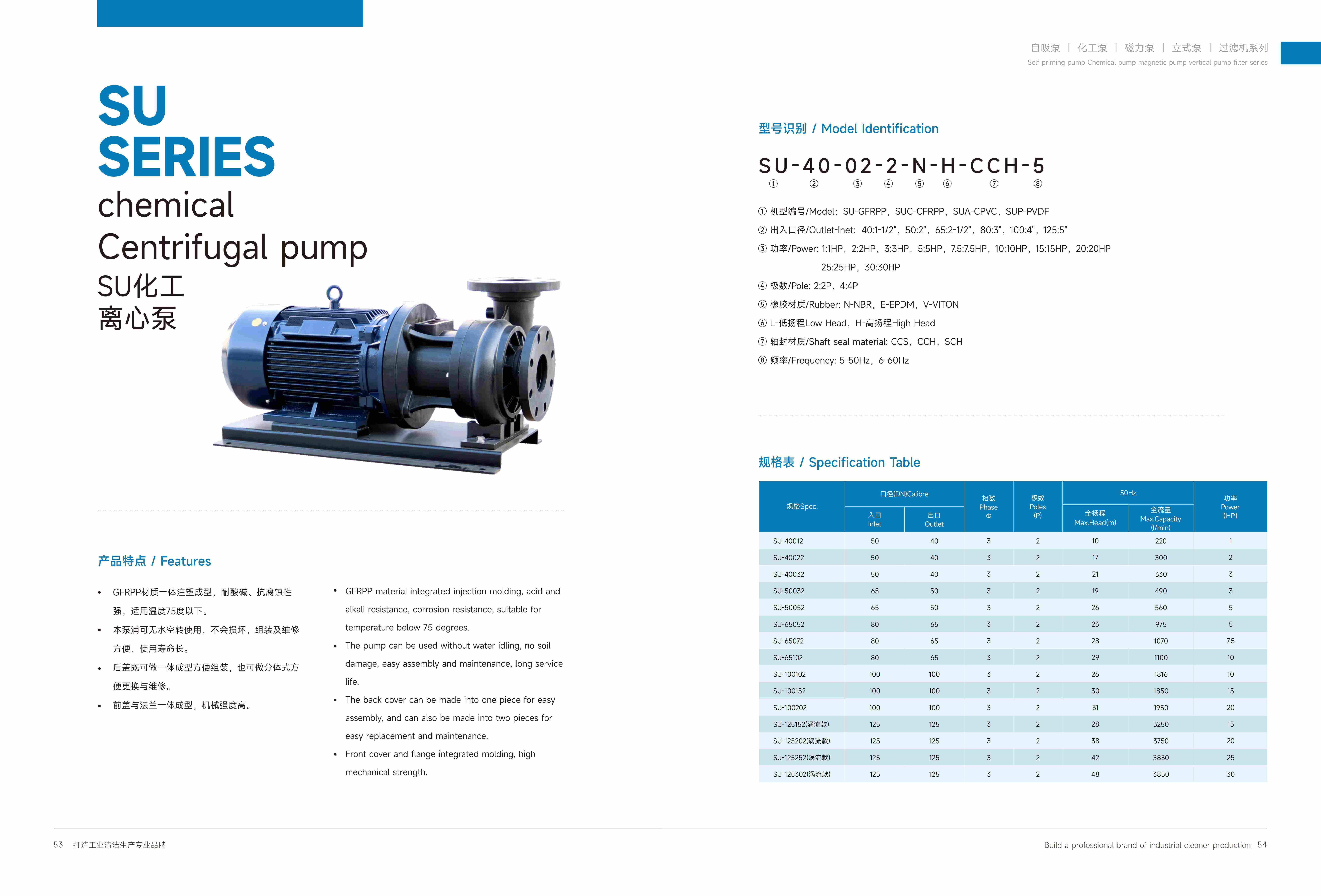Contact Us
|
WeChat
WeChat:+86 189-2947-8410Scanning Code Contact Us

WeChat:+86 189-2947-8410Scanning Code Contact Us

+86 189-2947-8410
Users in the process of using chemical centrifugal pumps, flow according to the pump model specifications have the corresponding data, the use of flow is too large how to adjust the small or how to adjust to the required range, what are the ways; according to the control mode can be divided into: control valve control, bypass control, parallel pump control and frequency converter speed control.

1. Regulating valve control
The operating point is adjusted by means of a regulating valve. This type of adjustment increases hydraulic losses and reduces pump efficiency. And can not realize energy saving.
Hydraulic loss: when the liquid flows through the pump body, the size and direction of its flow rate should be changed, and the impact occurs, so that once again the mechanical energy transferred to the loss of part of it, known as hydraulic loss.
2. Frequency conversion speed control
Operating point deviation from the high efficiency zone is the basic conditions of the pump needs to adjust the speed, when the pump speed change, the valve opening remains unchanged (usually the maximum opening), the piping system characteristics remain unchanged, while the water supply capacity and head characteristics and then change.
In the case of the required flow rate is less than the rated flow rate, frequency control when the head is smaller than the valve throttling, so frequency control of the water supply power required than the valve throttling small. Obviously, compared with the valve throttling, the energy-saving effect of frequency conversion speed control is outstanding, and the centrifugal pump works more efficiently. In addition, the use of frequency conversion speed control, not only helps to reduce the possibility of cavitation of centrifugal pumps, but also through the presetting of the ramp-up/down time to extend the start-up/shutdown process, so that the dynamic torque is greatly reduced, thus eliminating to a large extent the very destructive water hammer effect, greatly extending the life of the pump and piping system.
In fact, frequency control also has limitations, in addition to the larger investment, higher maintenance costs, when the pump speed change is too large will cause a decline in efficiency, beyond the range of the law of proportionality of the pump, unlimited speed regulation is not possible.
3. Bypass control
In the main pipeline discharge pipeline in parallel with a pipe with a valve. By switching the valve control to control the liquid flow.
4. Cutting impeller
When the rotational speed is certain, the pump pressure head and flow are related to the impeller diameter. For the same type of pump, you can use the cutting law to change the characteristic curve of the pump.
Cutting law is based on a large number of perceptual test data, it is believed that if the impeller cutting amount of control within certain limits (the cutting limit and the pump than the number of revolutions), before and after the cutting of the pump before and after the corresponding efficiency can be regarded as unchanged. Cutting the impeller is to change the performance of the pump a simple and easy way, the so-called variable diameter regulation, it is to some extent, to solve the pump type, specifications of the limited nature of the requirements of the water supply object of the diversity of the contradiction between the expansion of the pump's scope of use. Of course, cutting the impeller is irreversible process, the user must be accurately calculated and measure the economic rationality before implementation.
5. Series and parallel connection
Pumps in series is the export of a pump to another pump inlet to transport fluids. To the simplest two of the same type, the same performance of centrifugal pumps in series as an example: tandem performance curve is equivalent to a single pump performance curve of the head in the flow rate of the same case iteratively up, tandem work point A flow and head are larger than a single pump work point B, but less than a single pump when the 2 times, this is because the pump tandem after the first hand, an increase in the head is greater than the increase in resistance, resulting in a surplus of head to promote flow rate Increase, on the other hand, the increase in flow and resistance to increase, inhibit the total head rise. When the pumps are running in series, attention must be paid to whether the latter pump can withstand the pressure. The outlet valve of each pump should be closed before starting, and then open the pumps and valves in order to supply water to the outside.
Pumps in parallel is two or more pumps to the same pressure line to deliver fluid, the purpose is to increase the flow rate at the same pressure head. Still the simplest two of the same type, the same performance of centrifugal pumps in parallel, for example, parallel performance curve is equivalent to a single pump performance curve of the flow rate in the head of equal iteration up, parallel working point A flow and head than a single pump working point B is large, but take into account the resistance factor, the same is not up to a single pump when the 2 times.
If purely to increase the flow rate for the purpose, then the use of parallel or series should depend on the flatness of the piping characteristic curve, the flatter the piping characteristic curve, the flow rate after parallel is closer to the single pump operation of two times, thus more than the series when the flow rate is greater, more conducive to the operation.
Valve throttling although it will cause energy loss and waste, but in some simple occasions is still a fast and easy way to regulate the flow; frequency conversion speed control because of its energy-saving effect, high degree of automation and more and more favored by the user; cutting impeller is generally used for clear water pumps, due to changes in the structure of the pump, the versatility of the poorer; pumps in series and in parallel only applies to a single pump can not meet the conveyor task, and the series or parallel connection of the table. And the number of units in series or parallel is too much rather than economic. In the practical application should be considered from various aspects, in a variety of flow regulation methods to synthesize the best program to ensure the efficient operation of centrifugal pumps.
